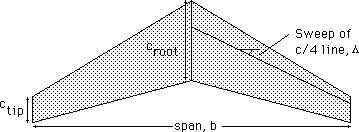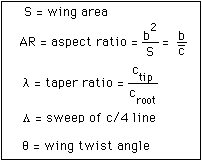- What is the speed of sound? How fast is Mach 1? What is the sound barrier? How fast do you have to go to break the sound barrier? How fast is the speed of sound at ground level? What does the term Mach number mean? What is the speed of an aircraft traveling at Mach 3 at an altitude of 30,000 feet? What is subsonic speed?
AERODYNAMICS
Thursday, 8 March 2012
SPEED OF SOUND, MACH NUMBER
Labels:
aerodynamics,
AERODYNAMICS- DESIGN POINT OF VIEW,
mach number,
sound barrier,
speed of sound
Wednesday, 7 March 2012
STABILITY OF AIRCRAFT
stability of an airplane
The aircraft's response to disturbance is associated with the inherent degree of stability built in by the designer, in each of the three axes; and eventuating without any reaction from the pilot. Another condition affecting flight is the aircraft's state oftrim – or equilibrium where the net sum of all forces equals zero. Some aircraft can be trimmed by the pilot to fly 'hands off' for straight and level flight, for climb or for descent. If the trim is wrong, and perhaps it flies with one wing low, inherent stability will maintain that wing-low attitude and not restore the aircraft to a wings-level attitude. It is desirable that longitudinal trim doesn't change significantly with alterations in power, nor does directional trim change significantly with alterations in airspeed.
Labels:
aerodynamics,
AERODYNAMICS- DESIGN POINT OF VIEW,
angle of incidence,
dihedral,
directional stability,
lateral stability,
longitudinal stability,
spiral instability,
stability of aircraft
BOUNDARY LAYER
| wing boundary layer
The type of operation for which an airplane is intended has a very important bearing on the selection of the shape and design of the wing for that airplane. Boundary layer effects play a very important part in determining the drag for the aircraft. Thus, the wing should be designed to minimize the drag. |
Monday, 5 March 2012
AERODYNAMICS- DESIGN POINT OF VIEW
AERODYNAMICS
LIFT AND DRAG
Lift is the force due to the difference in the pressure between the lower and upper surfaces, multiplied by the planform area of the surface.
The pressure difference between the upper and lower surfaces is adjusted by adjusting the surface geometry and attitude to the oncoming flow. In low-speed flows of air (<0.3 times the speed of sound, or Mach 0.3), there are 3 main ways of creating such a pressure difference:
LIFT OF AIRCRAFT
LIFT OF AIRCRAFT
There are several "definitions" of lift that may be found by searching through the relevant literature but only one that is really fundamentally correct.
Labels:
DOWNWASH,
EFFECT OF ASPECT RATIO IN LIFT,
LIFT,
MAGNUS EFFECT,
VORTEX
BERNOULLIS PRINCIPLE
Bernoullis and the physics of lift
ABOVE: The Bernoullis discovered the theoretical basis for lift produced by a rigid wing.
Alexander
McKee begins his fascinating book, Great Mysteries
of Aviation, with the observation that the most puzzling
mystery in the history of aviation is why it took so
long for humankind to learn to fly. With
so much intellectual and physical energy devoted to a single problem
for so long, one might have expected someone to stumble
on the secret, if only by accident, long ago. What was
the obstacle? The problem is that the physical principles that lie at the
foundation of flight are counterintuitive; indeed, the mechanics
of flight were ultimately revealed after some fancy manipulation of the physics and mathematics created by
Sir Isaac Newton in the late 1600s. Not only were
the theories of Aristotle, Bacon, Leonardo, and the rest
all wrong, but the true principles of flight, including how
birds stay aloft, were simply un-guessable and un-observable.
Labels:
aerodynamics,
bernoullis principle,
lift generation
Subscribe to:
Comments (Atom)


